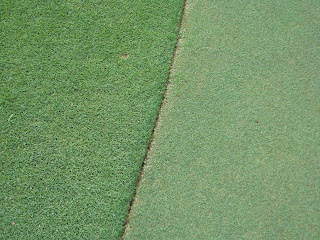The devastation in this area is immense and unbelievable. I have been through many storms in my life but this outbreak of weather has to be the most intense that I can remember. In our area 67 people have been confirmed dead and in the south the number is currently at 269. Over 190,000 people in the south are without power making everyday living impossible. Entire neighborhoods and communities have been wiped off the map and it will take a long time to recover. Tornadoes in the area have been classified from EF1 up to EF4 with wind speeds up to 190 miles per hour.
By the grace of God, our golf course was barely touched with only 17 trees down and a good bit of leaf debris. The debris covering the golf course consisted of metal roofing and roof materials, insulation and we picked up mail, business cards, receipts, and other papers from Fort Payne, Alabama, along with the back of a library book from North Sand Mountain Elementary School. Both of these locations are over 66 miles away from our golf course.
Coverage of the storm damage and the aftermath can be found at these local news station websites
Please keep our area and all those which have been affected by this outbreak of tornadoes across the south in your thoughts and prayers.

























